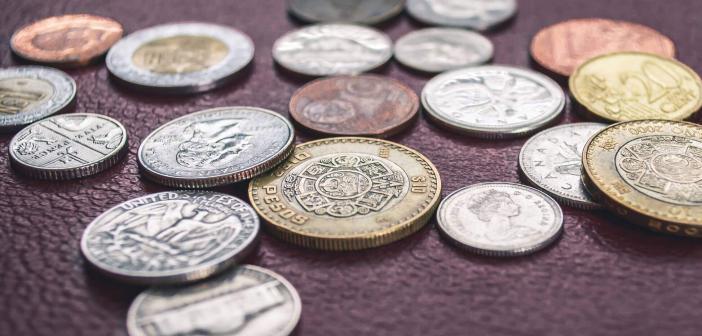Learn how blockchain truly works, master key definitions, and uncover what makes smart contracts so "smart." Dive into the fundamentals, gain valuable insights, and start your blockchain journey today!

- Guides
101 Blockchains
- on July 17, 2018
Best Alternatives to ICO Fund Raising
Alternatives to ICO: How else can blockchain startups raise fund?
Are you a blockchain-crypto entrepreneur evaluating options to raise funds for your project? Chances are that you are concerned after reading negative media coverage of ICOs, and you are looking for alternatives.
In this article, I explain a few alternatives to ICO.
They are:
- Security Token Offerings (STOs);
- DAICO;
- Simple Agreement for Future Tokens (SAFT);
- Interactive ICO (IICO);
- Token airdrop;
- Venture Capital (VC) raise.
1. Security Token Offerings (STOs): compliance with securities regulations
Regulators world over are scrutinizing ICOs because they suspect that ICOs are circumventing investment regulations. For e.g., in the US, the Securities and Exchange Commission (SEC), which is the regulator overseeing securities investment, has subpoenaed many ICOs.
SEC has concluded that most ICOs sold security tokens while disguising them as utility tokens. Securities are investment contracts that people buy primarily because they expect a future profit, whereas utility tokens just give access to a product.
Most ICOs didn’t have any functioning product at the time of launch, hence the claim of utility value is weak. Besides, they marketed their ICOs aggressively promising future profit, thus positioning even genuine utility tokens as securities.
However, they didn’t fulfill the securities regulatory requirements, for e.g. registration and reporting. Read more about it in “Security token vs utility token: A comparison“.
Security Token Offerings (STOs) are fully SEC compliant among the alternatives to ICO. The start-ups launch these with complete SEC approval while declaring their tokens as securities upfront. They register their tokens and complete the necessary paperwork for selling a securities investment contract.
Examples of STOs are the following:
- tZero: It’s a blockchain platform for capital markets;
- Polymath: This blockchain platform is to tokenize securities;
- Corl: A blockchain-powered platform to finance small businesses.
Read about how STOs compare with ICOs in “STO Vs ICO: The Difference Between The Two“.
2. DAICO: ICO with characteristics of a DAO model
In “Beginner’s Guide: How to spot ICO scams“, I had mentioned how scam ICOs made off with investors’ money without delivering any product. Ethereum founder Vitalik Buterin has combined characteristics of the DAO model with ICOs and has come up with the DAICO idea.
A regular ICO uses a smart contract that allows investors to send their funds to the start-up, and the function of the smart contract ends there. If the project team vanishes with the funds, investors have no legal recourse.
However, in DAICO, the smart contract is divided into two parts, as follows:
- The first part allows investors to contribute and then prohibits any further contribution after a limit. The project team can’t access funds at this point.
- The second part starts automatically as soon as the first part is over, and sets a ‘tap’ to limit withdrawal of funds by the project team. Token holders have voting authority in a ‘Decentralized Autonomous Organization’ (DAO) now, and the project team needs to submit a proposal for the project development. The DAO stakeholders vote and decide whether to raise the tap limit, i.e. to allow the project team to withdraw larger funds. If the project team or DAO stakeholders aren’t happy with the project progress, they can choose to self-destruct the smart contract, which will refund the remaining funds.
Read more about DAICO in the “Beginner’s Guide: What is a DAICO? The Improved ICO!“.
DAICO smart contract gives significant control to investors, and a scam ICO team can’t make off with the funds. On the other hand, it has some disadvantages:
- The project team needs DAO stakeholders to approve their project development proposals, which reduces the agility every start-up needs.
- Investors with short-term profit in mind may have less interest in the long-term development of the project, If they sell their tokens in exchanges, will the buyers have voting rights? There’s a lack of clarity on this.
- Many investors aren’t fully conversant with the promise of the blockchain technology. If they choose to self-destruct the project without understanding its’ value, then the project meets a premature end.
DAICO is new, and an example of a start-up that has used it is ‘The Abyss Platform‘, which is a blockchain-based digital distribution platform. Read “ICO Vs DAICO: What Is The Difference Between The Two?” to know how DAICO compares with ICOs.
3. Simple Agreement for Future Tokens (SAFT):
Among the alternatives to ICO, SAFT uses a two-step process to become SEC compliant. The blockchain start-up sells securities investment contract only to accredited investors. This way, they raise funds for project development while promising tokens in the future. The contracts are registered with the SEC.
When they launch their product, they sell tokens to the general public, while the SAFT investors get their tokens automatically. Since a functional product exists by then, the start-up expects that the SEC will consider their token as a utility token.
Marco Santori from the Cooley law firm and a team from the Protocol Lab have come up with this idea in October 2017. The perceived advantage is the SEC compliance due to a registered securities investment contract.
However, the approach has the following disadvantages:
- The SEC hasn’t confirmed that the two-step process meets their requirements.
- Accredited investors buying SAFTs get their tokens automatically when the start-up launches their product. This makes it look like a private sale, and the SEC will not accept this for a securities investment contract.
- Only the SAFT is registered, but not the tokens. However, only the start-up can create the tokens, hence SAFT investors are fully dependant on them. This makes the SAFT a ‘convertible security’ and the token an ‘underlying security’, and SEC requires registration of both. This is another reason the SEC will not accept SAFTs.
Read more about SAFTs in “What is SAFT: An Introduction To A Blockchain Project Fund-Raising Method“.
4. Among alternatives to ICO, IICO disincentivizes crypto whales:
ICOs can be capped, i.e. there is an upper limit for raising funds. They can also be uncapped, i.e. without an upper limit. Investors know the token price will remain the same when they buy in capped ICOs, however, many of these events get over very quickly. Investors can’t be sure of the token price in case of uncapped ICOs.
In many capped ICOs, ‘crypto whales’, i.e. investors with an extremely large amount of cryptocurrency holding, play a manipulative role. Sending Ether to the project team address requires that investors pay for ‘gas price’. Crypto whales pay an enormous amount of it to bring their transaction to the forefront, thus pushing smaller investors away. The whales then buy a massive amount of tokens and later manipulate the market.
Ethereum founder Vitalik Buterin came up with the idea of an ‘Interactive ICO’ (IICO), where the smart contract will provide a level playing field to all investors. This is done as follows:
- Investors can specify a maximum cap for the sale. Any fund raised in excess to that is returned.
- The contract handles all bids transparently.
- Investors can place or remove bid based on others’ behavior.
- IICO treats large and small bids equally, thus limiting advantages of crypto whales.
- Miners can’t censor transactions during the crowdsale, IICO makes it cost prohibitive. This also disincentivizes crypto whales.
The first project to try IICO was Kleros, a decentralized justice protocol.
5. Token airdrop to increase network effect:
Token airdrop means giving away crypto tokens for free. Many blockchain-crypto projects use this popular form of bounty campaign as part of their marketing strategy. I had explained the importance of token airdrops in “Beginner’s Guide: How to create a great ICO marketing strategy“.
However, token airdrops have now emerged as one among alternatives to ICO. Many projects now give away a majority of their tokens as part of airdrop, while the team retains the rest. The objective is to create a buzz about the token in crypto communities and thereby increase its’ use.
The projects try to increase the network effect this way. Most blockchain projects have greater value if more users start using their product. This phenomenon of increased value due to a higher number of participants is called ‘Network effect’. Read about it in the Wikipedia article on Network effect.
Everipedia, the blockchain-powered online encyclopedia, is a good example of a project that has tried this approach. Read more about token airdrops in “What is Airdrop? 5 Steps Guide To Receive Free Tokens“.
6. VC funding remains important among alternatives to ICO:
While you may be thinking more about ICOs and other alternatives, please also explore venture capital (VC) raise as an option. It is still important among alternatives to ICO, for your start-up.
A VC raise provides you with the following advantages:
- VCs are experienced business people, and many of them are entrepreneurs themselves. They scrutinize project proposals to a great depth. If you can sell your business plan to a VC investor, you will likely sell your product well in the market!
- VCs are experts in building new promising businesses and will hold your hand through the formative years. You can get excellent guidance, ‘proofs of concept’ (PoCs), accelerators etc from VCs.
- VCs don’t expect quick profits and will stick with you over a long-term, and if your project fails they share the accountability.
- VC raises are prestigious and you get highly positive coverage in business media. On the other hand, their network ensures muted media coverage if your project fails.
- Since VCs are reputed business people, you get access to significant market and networking opportunities.
Read more about how VCs compare against ICOs in “ICO vs VC: The Experience Matters“.
Note: If you want to understand the concept of ICO in-depth, read “What is an ICO: An introduction to Initial Coin Offering“.





